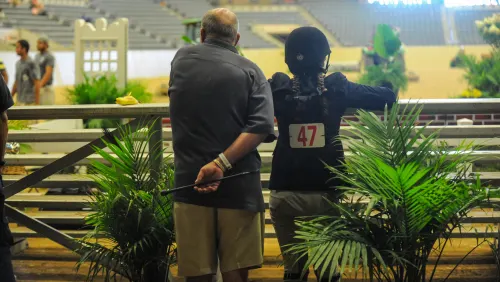Steeplechasing and foxhunting–two of the nation’s oldest horse sports–aren’t as closely linked today as they were 100 or even 50 years ago, but I fear that they each face extinction by the end of this 21st century if their leaders don’t take some far-reaching steps to address the same three issues that threaten both. Mason Lampton, president of the Masters of Foxhounds Association, and his fellow officers have an ambitious plan to capitalize on their still-flourishing sport in their centennial year (p. 93). But Jonathan Sheppard, the National Steeplechase Association’s president, suggests in his interview on p. 18 that NSA officials really don’t have such a plan.
First and foremost, both sports could be obliterated by the loss of land on which to ride. Chasing has lost several important meets to development. But the even bigger threat is loss of training grounds, gallops and trails, the places trainers need to get their horses fit to gallop 2 to 4 miles.
Second is participation, particularly of youngsters from our always more suburbanized society, a society that seems to every day become more acutely afraid of any kind of risk to either human or horse. The riddle is that as our culture becomes increasingly paralyzed by fear, we look to satisfy our need for adrenaline in non-participatory ways, basically through watching extreme sports or reality shows on TV. We like to watch people go bungee jumping or eating a mouthful of worms on TV, but we’ve become less and less inclined to actually do anything ourselves or to allow our family members to do anything that’s remotely risky. Oddly, though, over the last 25 years, almost every other horse sport except steeplechasing has mushroomed in participation, perhaps because we Americans are seeking a return to our equestrian/frontier roots.
Steeplechasing’s statis is certainly also related to the difficulty of riding in races–the weight, fitness and the courage requirements are far greater than in any other discipline. Plus, we’re a results-driven culture, and to win races you have to be riding fast horses. And the truth is that training won’t make your horse faster than he is naturally.
ADVERTISEMENT
Third, both sports are under the gaze of the animal-rights proponents. I don’t need to explain that, other than to say it’s one reason why Lampton, who’s been doing his part to create and develop new jockeys through his founding of the North American Point-to-Point Association, has now shifted much of his attention to using the MFHA’s centennial celebration as a springboard to promote hunting and to gird its proverbial loins against future threats.
I’m not suggesting for a second that chasing should be altered into something more “extreme” than it already is in the name of growth. But I am suggesting that people involved in the sport might consider ways to find and attract what you might call extreme-minded individuals who already can or who would like to ride horses. Perhaps they could establish a stronger relationship with the NAPPA program to attract and encourage kids to hunt and to ride, train and own steeplechasers.
I’d also suggest that they should take a more active stance about land conservation, perhaps in concert with their brethren in foxhunting, who 10 years ago established the Hunting Habitat Preservation Award (p. 92), an award that has certainly encouraged foxhunters to embark upon some ambitious plans to save their countryside. After all, just keeping the land they have now will become an ever-bigger challenge through the rest of the century for steeplechasing, a sport that’s concentrated in some of the country’s fastest-growing areas.














